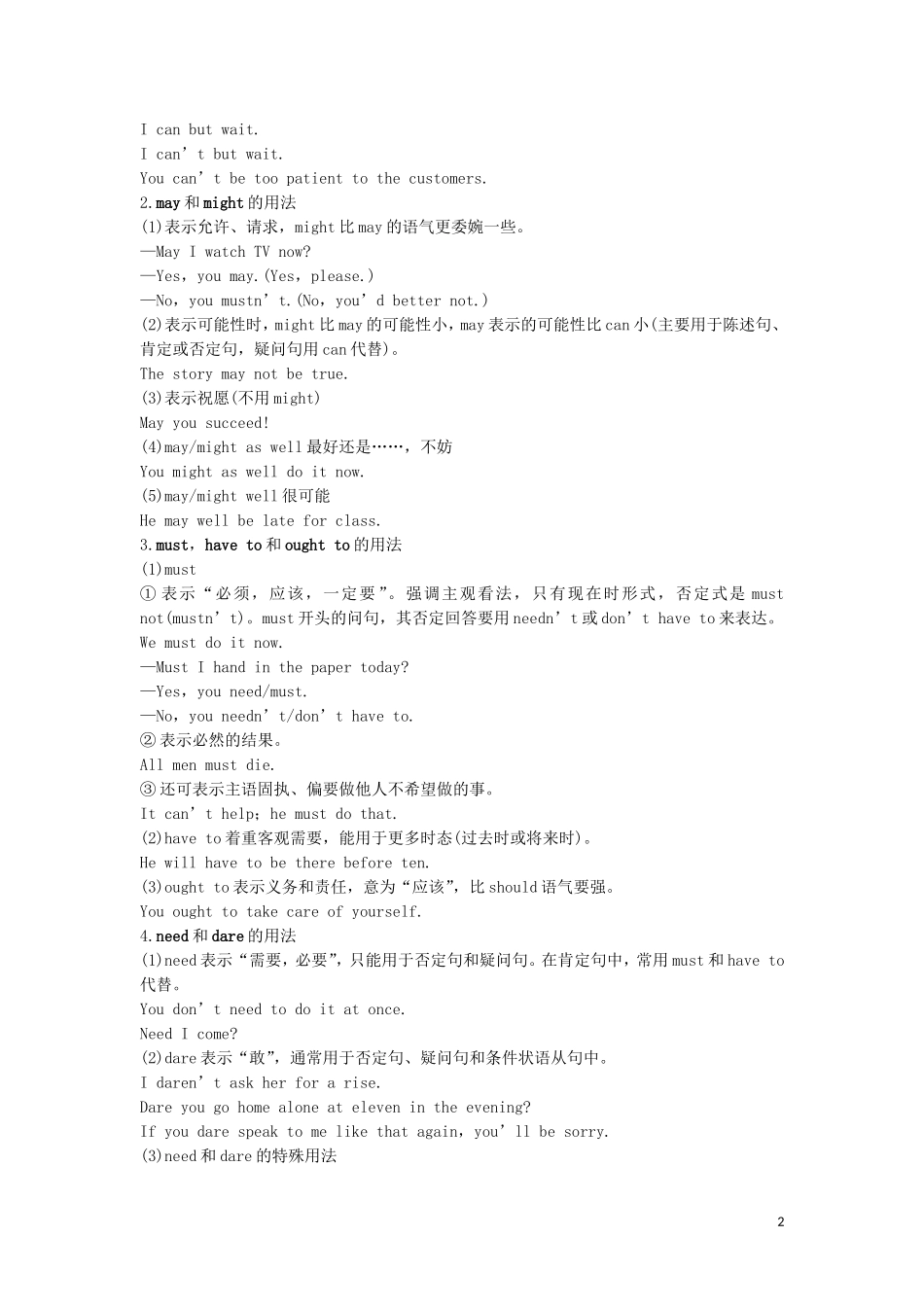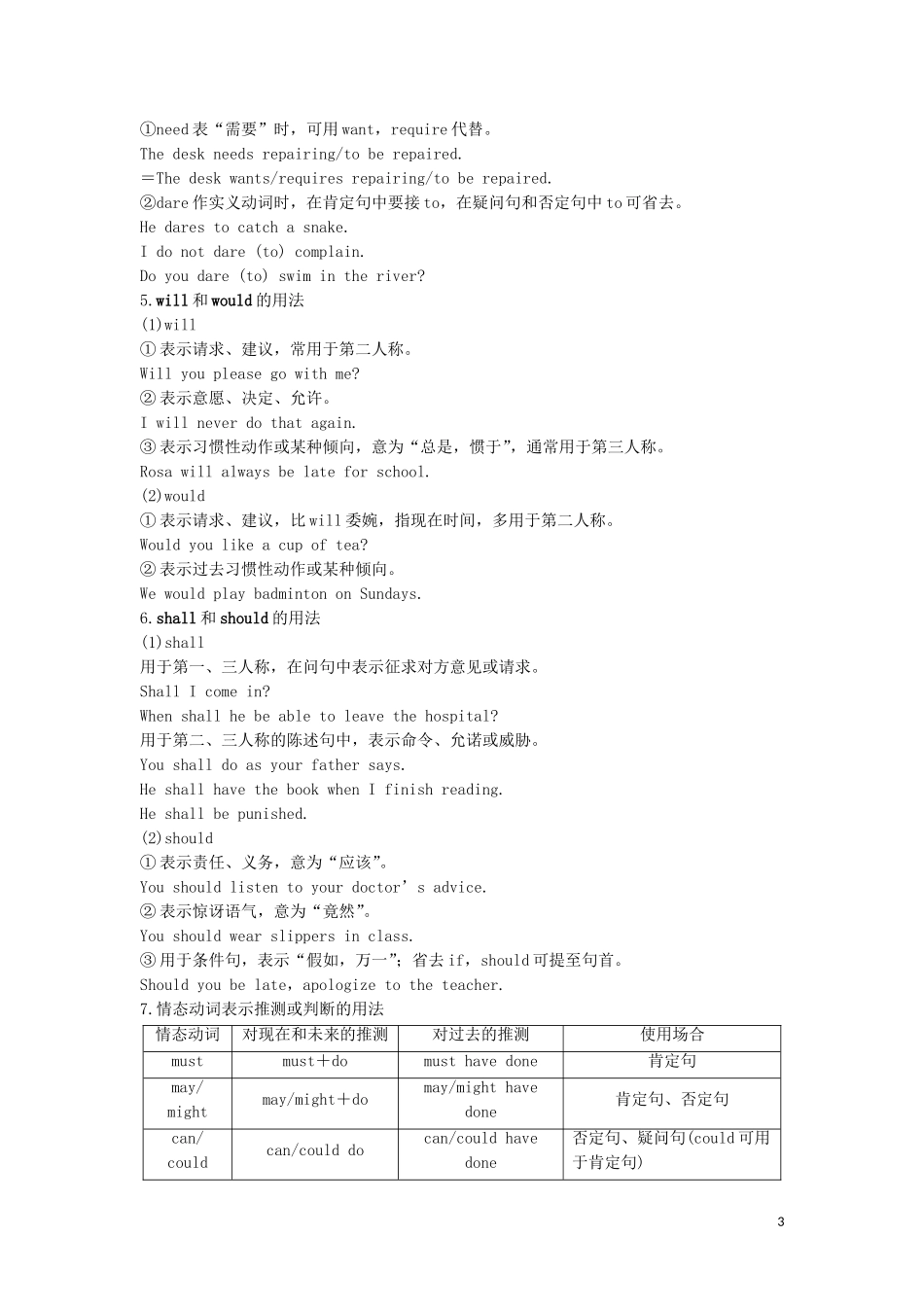专题 3 情态动词和虚拟语气框架结构图情态动词的核心考点1.can/could 和 be able to 的用法(1)can 和 be able to 都表示能力,意思上没多大区别。但 can 只有现在和过去时,而 be able to 则有更多的形式。但当成功地完成某一具体动作时,通常不用 could 而用 was/were able to 来表示。这时 was/were able to 相当于 managed to,表示经过一番努力,终于能够完成某事。Her mother can speak French.The wounded man was still able to get to the village and was saved by the villagers in the end.(2)can/could 表示猜测“可能”,一般用于疑问句和否定句。—Can the news be true?—It can’t be true.Someone is knocking at the door.Who could it be?(3)can 可以表示理论上的可能性,指常有的行为或情形,意为“有时会……”。Anybody can make mistakes.(4)表示请求、允许(表请求时,口语中常用 could 代替 can 使语气更委婉,回答时用 can)。Can I go now?—Could I come to see you tomorrow?—Yes,you can.(否定答语可用 No,I’m afraid not.)(5)表示惊异、怀疑、不相信的态度(主要用于否定句、疑问句或感叹句中)。How can that be true?I can’t believe my eyes and ears.How could you be so careless?(6)can 的特殊用法。can but 只好;can’t but 不得不;can’t...too 再……也不为过,越……越好1I can but wait.I can’t but wait.You can’t be too patient to the customers.2.may 和 might 的用法(1)表示允许、请求,might 比 may 的语气更委婉一些。—May I watch TV now?—Yes,you may.(Yes,please.)—No,you mustn’t.(No,you’d better not.)(2)表示可能性时,might 比 may 的可能性小,may 表示的可能性比 can 小(主要用于陈述句、肯定或否定句,疑问句用 can 代替)。The story may not be true.(3)表示祝愿(不用 might)May you succeed!(4)may/might as well 最好还是……,不妨You might as well do it now.(5)may/might well 很可能He may well be late for class.3.must,have to 和 ought to 的用法(1)must① 表示“必须,应该,一定要”。强调主观看法,只有现在时形式,否定式是 must not(mustn’t)。must 开...


